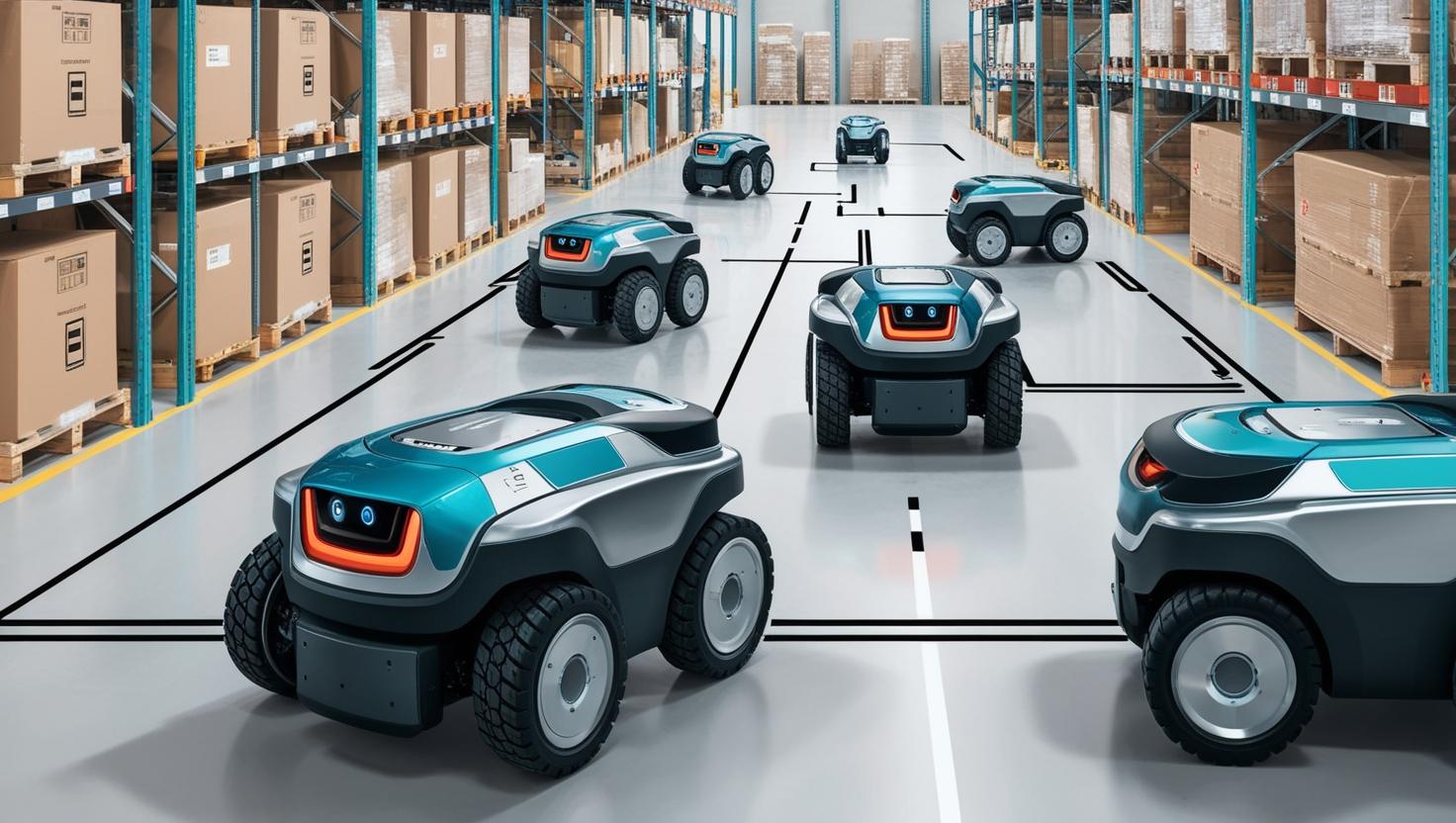As industries accelerate toward digital transformation and operational efficiency, Autonomous Mobile Robots (AMRs) have emerged as one of the most promising innovations in industrial automation. These smart, self-navigating machines are already revolutionizing sectors such as manufacturing, logistics, warehousing, and healthcare by handling repetitive, labor-intensive tasks with speed, precision, and minimal human intervention.
Investors and enterprises alike are paying close attention to this technology—and for good reason. The AMR market is experiencing rapid growth, with global demand driven by supply chain modernization, rising labor costs, and the ongoing evolution of smart factories under the umbrella of Industry 4.0.
What Are Autonomous Mobile Robots?
Autonomous Mobile Robots are intelligent machines equipped with sensors, cameras, lidar, and AI-powered navigation systems that allow them to move independently within dynamic environments. Unlike traditional Automated Guided Vehicles (AGVs), which follow fixed paths or tracks, AMRs can dynamically adjust their routes in real time to avoid obstacles, reroute for efficiency, and collaborate seamlessly with human workers or other robots.
AMRs are designed to perform a range of tasks such as material handling, inventory movement, and transportation of goods between different points in a facility. They are increasingly deployed in environments like distribution centers, hospitals, factories, and even retail spaces.
Why the Market Is Growing Rapidly
The growth of the autonomous mobile robot market is underpinned by several macro and microeconomic drivers. First, the ongoing labor shortage in logistics and manufacturing is pushing companies to look for automation solutions that can maintain or increase throughput without relying on unpredictable human labor.
Second, the surge in e-commerce and same-day delivery expectations has put unprecedented pressure on warehouses and fulfillment centers to become faster and more efficient. AMRs help achieve these goals by operating 24/7 with consistent performance, improving picking speed, and reducing operational bottlenecks.
Download PDF Brochure @ https://www.marketsandmarkets.com/pdfdownloadNew.asp?id=107280537

Third, AMRs are easier to deploy and scale than traditional fixed automation systems. Their flexibility makes them ideal for dynamic environments where layouts change frequently or where seasonal demand spikes require rapid scaling.
The global autonomous mobile robots market is expected to grow from USD 2.25 billion in 2025 to USD 4.56 billion in 2030, with a CAGR of approximately 15.1%.
The AMR market is growing significantly due to increasing demand for automation in manufacturing, warehousing, and logistics sectors, where AMRs are becoming essential assets because of their adaptability and ease of integration into existing infrastructures. The technology is moving from early adoption to mainstream implementation across various industries.
Key Use Cases Driving Demand
In manufacturing, AMRs are used for just-in-time delivery of parts, line-side replenishment, and moving semi-finished goods across production zones. Their integration into smart factories helps reduce downtime and optimize workflows.
In warehousing and logistics, AMRs improve order picking, inventory transport, and packing operations. Companies like Amazon, DHL, and Walmart are investing heavily in these systems to streamline fulfillment processes.
In healthcare, AMRs are increasingly used in hospitals to transport medication, linens, lab samples, and food—freeing up valuable time for clinical staff and improving hygiene protocols.
Other emerging use cases include retail floor restocking, hotel service robots, and construction site logistics.
Challenges and Competitive Landscape
Despite the strong growth trajectory, the AMR market faces challenges, including high initial deployment costs, integration with legacy systems, and concerns about data security in connected environments. Additionally, navigating highly dynamic or unstructured environments still requires improvements in machine learning and vision-based navigation.
However, intense competition and innovation are driving rapid advancement. Leading companies such as Mobile Industrial Robots (MiR), Locus Robotics, Fetch Robotics (now part of Zebra Technologies), Geek+, and OTTO Motors are pushing the envelope on speed, payload, and collaborative capabilities.
Technology giants like Amazon, Google, and NVIDIA are also entering the space through AI software platforms, chipsets, and robotics investments—indicating growing confidence in AMRs as a long-term strategic market.
A Smart Bet for the Future of Automation
As companies move toward leaner, more agile operations, AMRs are increasingly seen not as luxury automation but as essential infrastructure. Their ability to navigate complex spaces, operate autonomously, and collaborate with human workers places them at the center of modern industrial transformation.
For investors, AMRs represent a high-growth, high-potential segment of the broader robotics and automation market. With demand spanning multiple sectors and real-world use cases expanding rapidly, autonomous mobile robots are poised to become a foundational element of smart, scalable, and resilient operations in the years to come.
Frequently Asked Questions (FAQ)
Autonomous Mobile Robots (AMRs) in Industrial Automation
1. What are Autonomous Mobile Robots (AMRs)?
AMRs are self-navigating robots that use sensors, cameras, lidar, and artificial intelligence to move autonomously through dynamic environments. Unlike traditional robots that follow fixed paths, AMRs can make real-time decisions, avoid obstacles, and adapt to changes in their surroundings.
2. How do AMRs differ from Automated Guided Vehicles (AGVs)?
AGVs follow predefined routes using markers or wires embedded in the floor and require significant infrastructure. AMRs, on the other hand, do not rely on fixed paths and can freely navigate using onboard mapping and perception technologies, making them more flexible and easier to deploy.
3. What industries are adopting AMRs?
AMRs are being widely adopted across industries including manufacturing, logistics, warehousing, e-commerce, healthcare, and retail. They’re used for tasks like material handling, inventory movement, order picking, and intra-facility transport.
